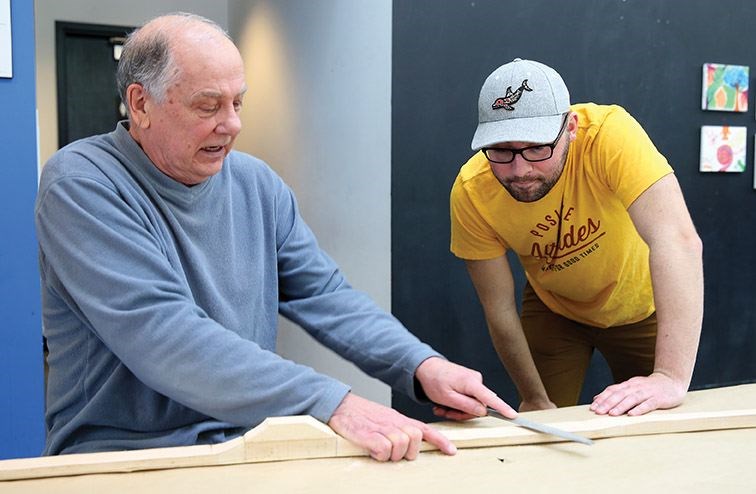Archer Wayne Tanemura, who's been shooting arrows with the Silvertip Archers for the last four years, thought the best way to get exactly what he wanted out of a bow was to make it himself.
Enter Theo Ploias, the instructor of Traditional Bow Design and Manufacture offered at Two Rivers Gallery. He's halfway through his eight-week course and the 13 participants, including Tanemura, are making real progress on their creations.
These longbows will have a 30-pound draw, which is ideal for target practice, or when hunting grouse or rabbit.
"I have three bows now and I shoot (with Silvertip Archers) two to three times a week and I thought it would be very interesting to see how to make a bow," Tanemura said.
For instructor Ploias, bow making started with a day at the beach hanging out with his cousin, Robert, near Vancouver about eight and a half years ago. He found a great piece of cedar and on the spur-of-the-moment the guys decided to make a quick bow out of the found wood, gathering what they could forage from the beach.
"It actually turned out half decent and we were kind of impressed with it," Ploias said.
"I thought I'd go home and do a little research and make a legit bow and yeah, I got hooked."
Now in Prince George and enrolled in the forestry program at UNBC, self-taught using the four-volume series The Traditional Bowyer's Bible, Ploias thought he'd share his knowledge with others interested in bow making.
"This is a skill that not very many people will pursue, or have, or even hear of, really - it's kind of a dying thing - so it's just something I've always wanted to do," Ploias said. "We're planning to offer it again in the fall and next spring, too."
Ploias is hoping the participants' new-found knowledge will inspire them to continue to build bows.
"Once you see the bow shoot for the first time - I can very distinctly remember that - my very first bow that shot more than 150 feet per second (considered a fast bow) - it was pretty rewarding," Ploias said.
The bows created in the class are backed self bows. Ploias said the backing is for extra insurance because when making your first bow there's bound to be mistakes.
"By putting on that backing we have that much more chance of the bow not breaking," Ploias said.
After gluing on the backing, it's pretty much all about shaping the bow.
"Then getting it to the stage so we can tiller, and tillering is actually the process of getting the bow to bend and to bend evenly across the entire length so there's no places that it might snap," Ploias said. "To have the bow tillered is the bulk of what making a bow is."
Three of the eight classes are dedicated to tillering alone, he added.
"Once that's done the bow is technically shootable and ostensibly finished," Ploias said.
Ploias will also teach the bow builders how to make their own Flemish twist string to use on their bow.
During the second-to-last class participants will get to shoot an arrow at close range using their own handmade bow at a target set up specially at the gallery. And then there's the last class at the end of March.
"From there we're just making it look really pretty."



